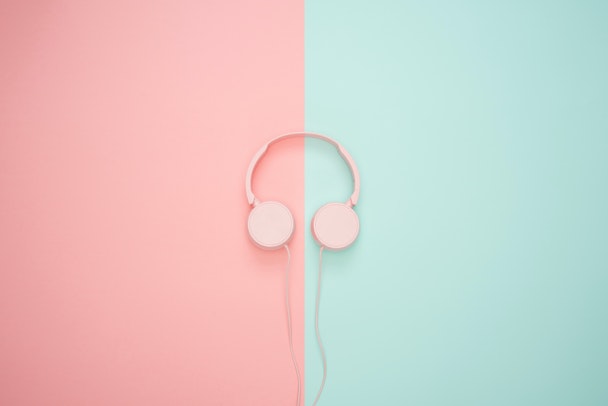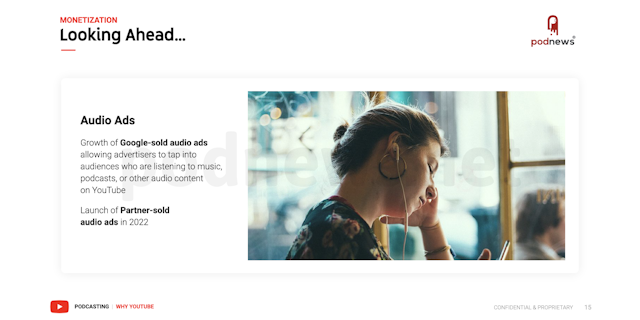Why audio accessibility is a growing commercial concern for brands
As investment in the podcasting space continues, many audio companies have dollar signs in their eyes. But in the gold rush for audio money, the danger is that investors leave sections of their audiences behind – and abandon the moral and commercial imperatives to make audio accessible.

Podcasting is broadening in accessibility – geographically and to niche audiences / Icons8 Team
YouTube is finally investing in podcasting. Despite the huge amount of podcast listening that takes place on the site, the world’s largest video platform is only just now investing in solutions for audio advertising on its sites and apps.

It follows the news that YouTube is apparently enticing podcasters to create video versions of their audio content, offering ‘grants’ of up to $300,000 to the biggest networks in the space. Smaller grants are available to individual creators.
The slow encroachment of YouTube into the space follows huge investments from Spotify and other channels into podcast advertising and distribution. Spotify in particular has been on a tear of acquisitions, particularly around companies that provide tools that prove the viability of digital audio advertising.
Meanwhile, BuzzFeed Studios has partnered with Acast to launch a new suite of audio products, for instance, and the battle for exclusivity of shows continues. Much of that is predicated on the increasing commercial interest in the audio format. Podcast advertising is forecast to exceed $2bn by the end of 2023.
Eric John is vice-president of the IAB Media Centre. He says: “The big takeaway from consumer behavior pre, during and post-pandemic is that podcasting has tremendous growth ahead. Consumers love listening and will integrate it into their lives wherever it fits. Advertisers love the flexibility to adjust their messaging on the fly. And, most importantly, brands are continuing to shift to podcasting simply because it works: when they run an ad, the cash register rings.”
But those commercial investments are primarily around growing the existing commercial opportunities around podcasting. As the following examples demonstrate, the bigger opportunity is around making sure podcasting is accessible to all – especially those who speak other languages.
Universal audio
A number of automated solutions aim to close the gap between audio accessibility and commercial opportunities.
The majority of podcast discovery still occurs by word of mouth, with discovery on platform a distant third means of finding podcasts. That presents a problem when it comes to podcast creators discovering new audiences, as it limits the audience to the cohort that initially discovered it. That exacerbates the problem of no new hits occurring as those new potential hits can be separated by language.
In order to solve that issue, iHeartMedia is attempting to use a synthetic voice tool from Veritone in order to automatically translate podcasts into other languages. Veritone, which makes the claim that it ‘ethically’ clones voices, would in theory broaden accessibility beyond the narrow confines of any one language.
It would mean that advertising can be served across podcasts, authentically, to a much broader audience. As the industry sprints toward programmatic as the primary means of inserting ads, that means accessibility of this nature boosts the viability of podcast advertising exponentially.
Gayle Troberman is chief marketing officer of iHeartMedia. She says: “As it relates to new languages, as podcast audiences continue to rapidly grow in the US, the medium is beginning to grow meaningful fanbases globally. We have been partnering with audio companies in different territories like NJR in France and GEDI in Italy to develop, translate, distribute and monetize slates of hit podcasts that are also available to listeners in the US on the iHeartRadio App.”
It instantly expands the potential reach of podcasters and – if done in a way that avoids the audio uncanny valley – can be done with relatively little effort, improving the ROI on individual podcasters.
Troberman explains the benefits: “You are also seeing big podcast talent beginning to translate their podcasts, for example ... the Princess of South Beach podcast sponsored by Lincoln on My Cultura (our standalone podcast network dedicated to elevating Latinx voices and creators) is available in both English and Spanish ... it’s a huge hit, with over 35% of the downloads actually being driven by the Spanish version.”
Better together: analytics and accessibility
Consumers now spend one-third of their media time with audio in various forms, with the largest sector by far comprising broadcast radio, followed by streaming and podcasts. Analyst Forrester believes that podcasting will “siphon away” radio ad dollars by cutting into radio listening time.
Crucially, it notes that the investment in analytics tools will also build on radio ad spending by boosting ad prices with better targeting. It is validation of Spotify’s investments – but has huge implications when those tools are turned to the new audiences afforded by tools such as Veritone.
By combining the investments in tools that allow for that targeting with tools that broaden accessibility in terms of geography and for niche audiences, podcast advertising would eventually live up to its potential.
Troberman concludes: “What we believe is the most compelling opportunity for brands, as they want to find and connect with consumers through audio, is to plan x-platform so you can reach the most consumers as efficiently as possible.
“We believe the future is SmartAudio, which allows brands to leverage their data and ours to find their targets across broadcast, podcasts and streaming. Much like the digital video landscape, big leaps in impact happened when brands learned how to effectively target and measure video across platforms.”
In order to continue to grow, then, podcasting needs to become more accessible. While analytics tools are demonstrating the viability of the digital audio format to advertisers, the true opportunity comes when those tools are turned to new audiences. Podcasts no longer have to be limited to the language they were initially created in; they can be a powerful and global new channel for advertisers.

